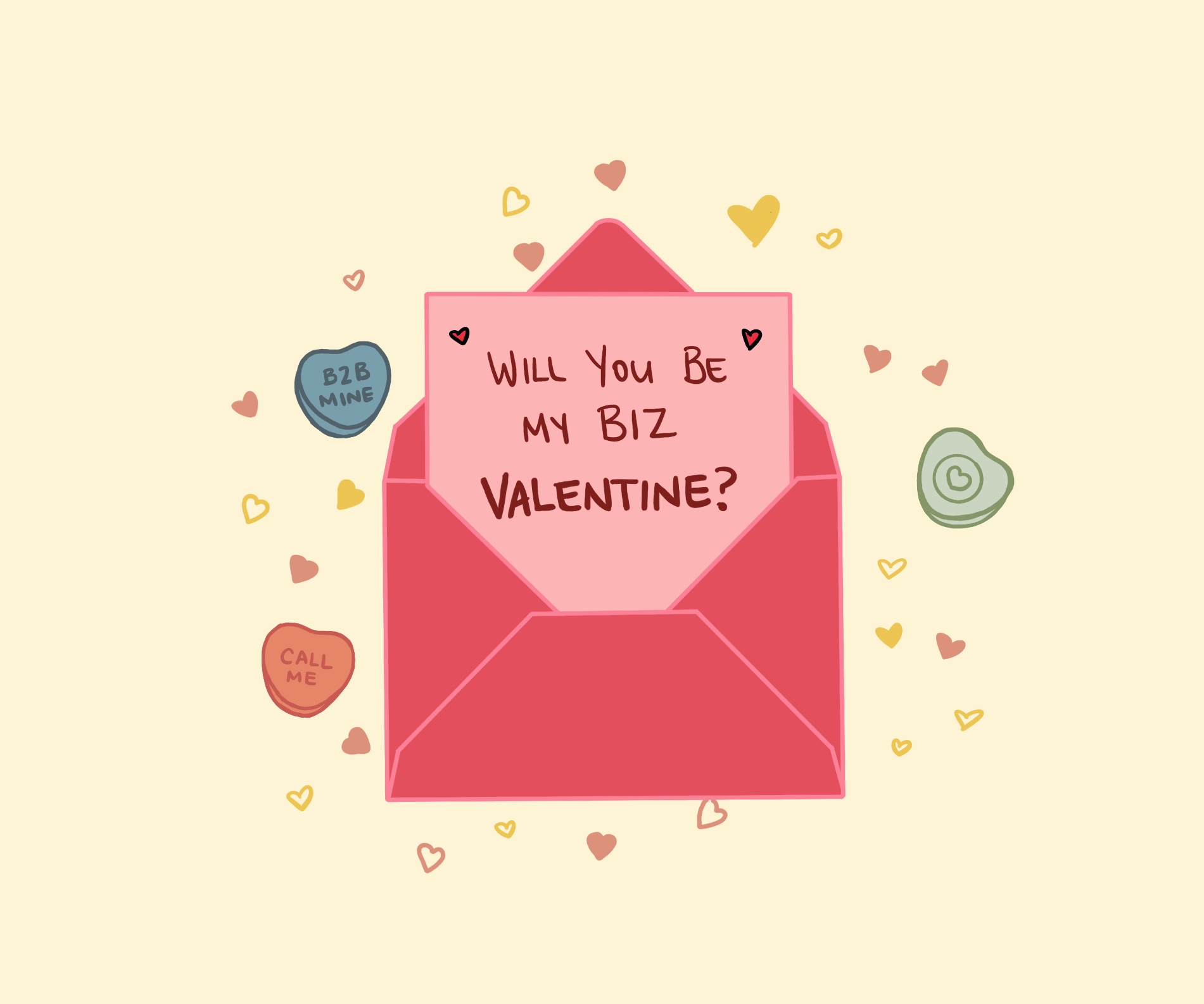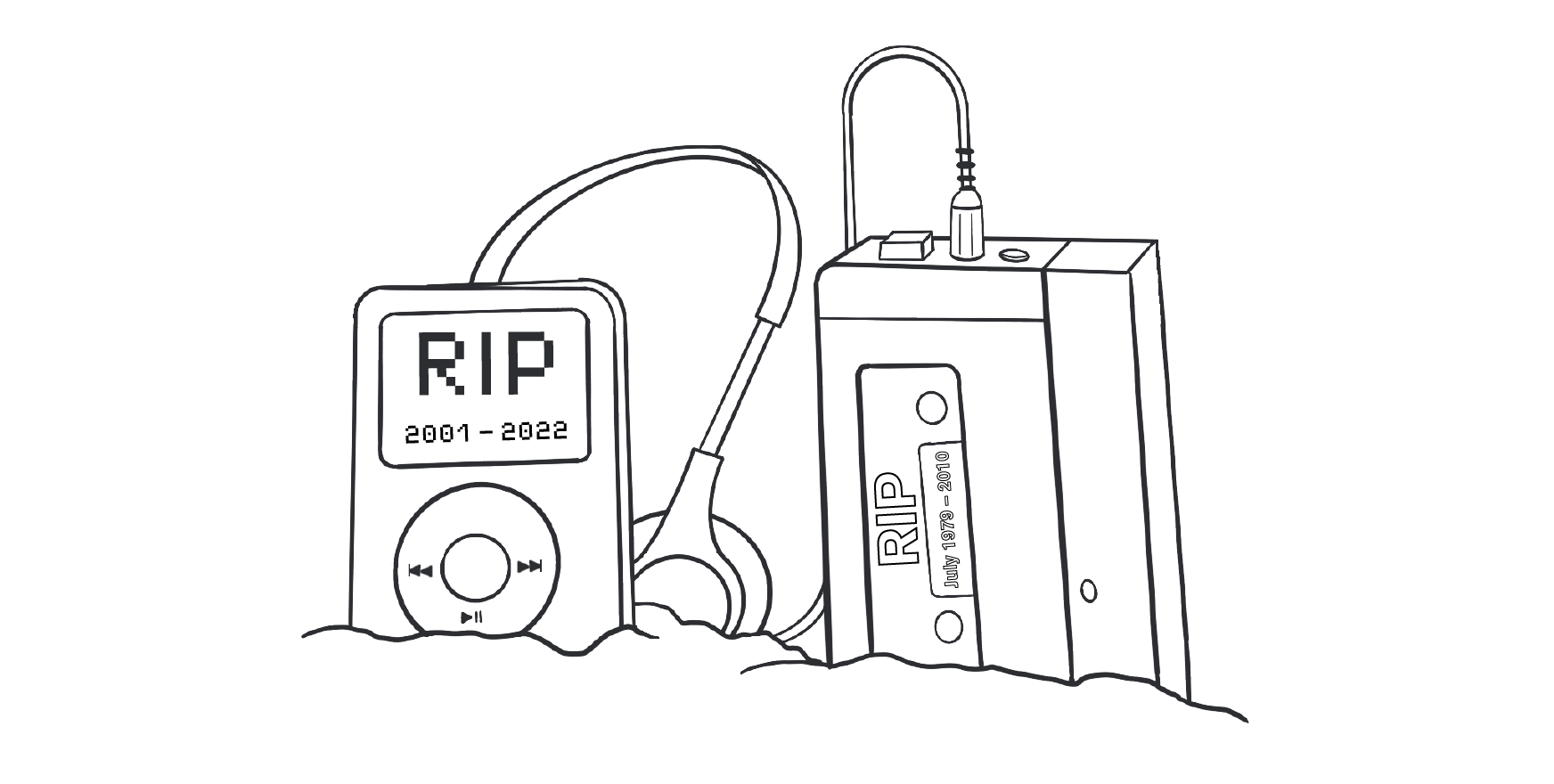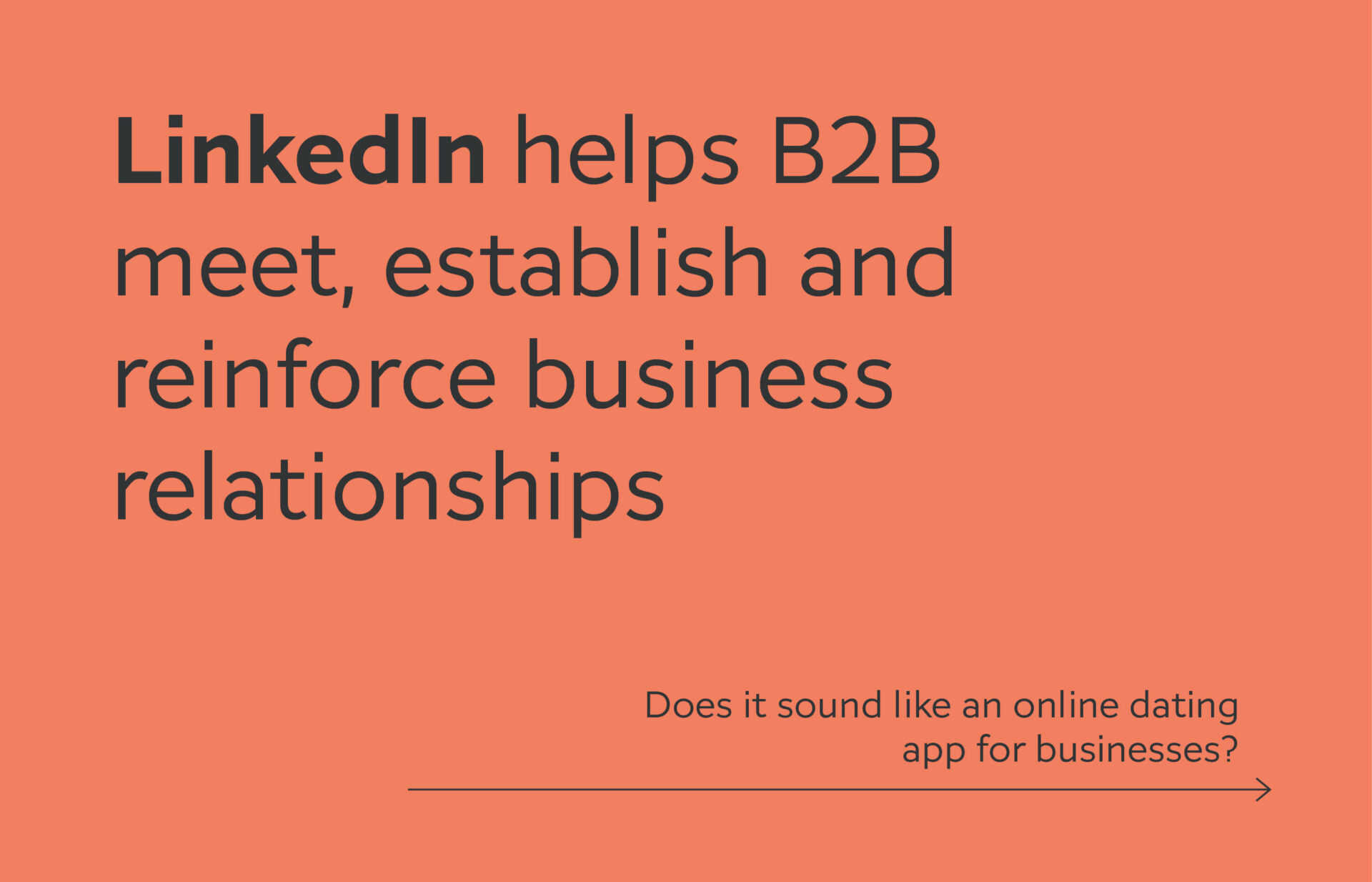Leveraging LinkedIn for B2B Sales
LinkedIn is a professional networking site with 21.7 million users in Canada as of December 2022, 57% of these users were aged between 25 and 34 years*. Not just famous for recruitment, LinkedIn is a good platform for B2B companies to effectively find their clients and showcase their products or services.

LinkedIn helps B2B meet, establish and reinforce business relationships, does it sound like an online dating app for businesses? We have some tips to use LinkedIn as a matchmaker and connect with the right partners:
- Love at the first sight – Optimize your company’s LinkedIn page with an updated picture, a strong headline that accurately describes your business and have the right keywords to help your potential clients find you
- What’s your type – Target the right audiences that match your market profile using audience attributes: company information, demographics, educational information, job information, interests, and traits
- Stay on their mind – Posting regularly will increase your visibility and credibility. More importantly, use your knowledge and experience to create high quality content, this is helpful to build trust.
- And just like all other relationships, be sincere and don’t try too hard by being too sales-y.
We understand that your daily schedule is busy enough and updating your company’s LinkedIn page is often low on the priority list (if it’s there at all, believe us, we experience the same). Well, better late than never, we should start somewhere.
Sources: Statista
The Walkman
The beginning of mobile technology, the Sony Walkman was an early taste of products that would influence our social behaviours. Introduced in 1979, it was a blend of industrial design and pop culture and broke a number of preconceptions of what was possible and what consumers wanted. It inspired and encouraged more personal DJs, thanks to the pinnacle rise of the mixtape culture in the 90s (with all the various rules around the perfect mixtape).
The walkman remained in production for 31 years from 1979 – 2010, ten years longer than its successor, the iPod.
Now, streaming services are most peoples’ go-to for musical pleasure (though we love the resurgence of the record player and hope it has staying power). We have some pretty diverse musical tastes in the studio. You can check out some of what we listen to on our 2022 playlist.





